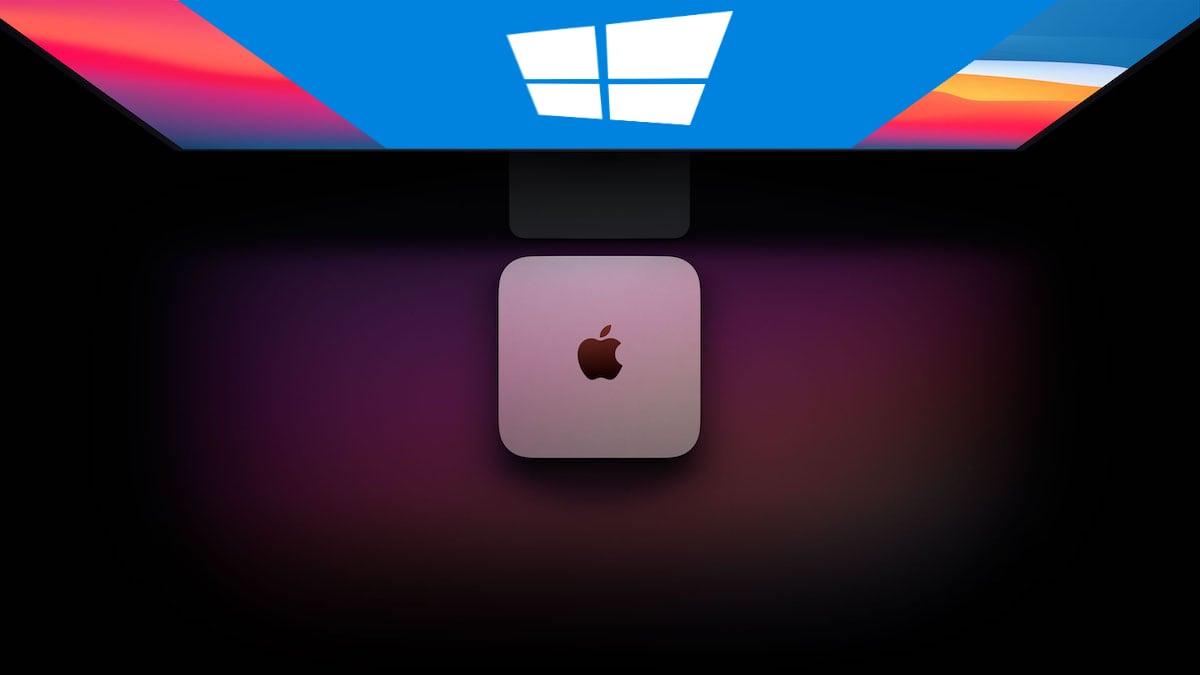Windows 10 for ARM, when running in Parallels virtualization software on Apple Silicon M1 Macs, runs faster than it does natively on Microsoft’s own Surface Pro X. This has been tested using Geekbench and shows how massive the performance difference is when Windows 10 is used on Microsoft’s own custom-designed hardware.
We had previously seen that running Windows 10 in QEMU, which is under development for Apple Silicon Macs, performs twice as fast as Surface Pro X. With a technical preview of Parallels, we see similar results.

Windows in Parallels on M1 Mac is faster than Windows on Surface Pro X
Created Labs on YouTube installed Windows 10 in Parallels and ran some tests to demonstrate how well does Microsoft’s operating system performs via virtualization on an Apple Silicon Mac. The testing was done using Geekbench, as it is available on both macOS and Windows. A base-model $699 Mac mini was used for testing, although a MacBook Air would also give similar results as they use the same chip. The results are very interesting and we did not expect test scores under virtualization to be so good.
When you configure Parallels software to use just four cores, you get the below scores for Windows 10 in Geekbench:
- Single-core: 1518
- Multi-core: 4988
Even during virtualization, the single-core scores are some of the highest numbers for single-core performance that you can find on Geekbench.
When all eight cores are utilized for virtualization, the single-core score increases further, with the multi-core score showing significant improvement.
- Single-core: 1547
- Multi-core: 6186
For reference, here is what Windows 10 scores in Geekbench, when tested running natively on the second-generation Surface Pro X with SQ2 chip, which costs $1,499.
- Single-core: 795
- Multi-core: 3085
You can check out the complete video below by Created Labs:
Surface Pro X uses Microsoft’s custom-designed SQ1 and SQ2 chips, in partnership with Qualcomm. Both of these chips feature 8 CPU cores and are fabricated using a 7nm process. While they are energy efficient, when compared to Intel’s Core processors, they are not the best performing chips in the world. Paired with Windows 10, which does not have a shipping x64 emulation layer for apps, Microsoft’s tablet does a poor job of supporting legacy applications, something which it is usually known to do well. Meanwhile, Apple has been supporting legacy x86 macOS apps very well, thanks to Rosetta 2.
Microsoft is now planning to design its own chips to use in future Surface hardware, but if its first two attempts are to be judged, the company will need to put in a lot of effort to create competitive silicon.
Read More:
- M1 MacBook Air can render 8K footage without slowing down from heat under the Australian sun
- M1 MacBook Air outperforms Intel’s 11th gen Tiger Lake processor in Geekbench benchmarks
- M1 MacBook Air vs M1 MacBook Pro – which one should you get?
- MacBook Air with M1 chip outperforms 16-inch MacBook Pro in Geekbench benchmarks
- iPad Pro with A12z chip vs. MacBook Air with M1 chip – performance, battery, display comparison
4 comments
Comments are closed.